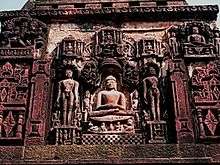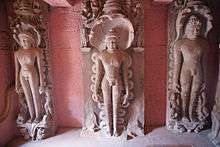Jainism in Uttar Pradesh
Uttar Pradesh, a state in north India has a long association with Jainism. Today the state is home to a number of Jain monuments, such as Jain Temples and Jain Tirths. There are around 213,267 Jains in Uttar Pradesh according to 2011 Census of India.[1]

| Part of a series on |
| Jainism |
|---|
 |
|
Jain prayers |
|
Ethics |
|
Major sects |
|
Texts |
|
Festivals
|
|
|
History
Parshvanatha, the twenty-third tirthankara, was born in Benaras (now Varanasi)[2] in 872 BCE.[3] According to Jain tradition, Kashi (now Varanasi) is the birthplace of three more tithankaras, namely Suparshvanatha, Chandraprabha and Shreyansanatha.[4]
According to Jain tradition, five tirthankaras were born at Ayodhya, including Rishabhanatha,[5] Ajitanatha,[6] Abhinandananatha,[7] Sumatinatha[8] and Anantanatha.[9]
The famous naked male torso found at Lohanipur, whether Mauryan or, more likely Kushana, is generally taken as indicative evidence of ascetic tradition in north India. Inscriptions from the many ayagapatas of the Mathura region make clear that puja to the tirthankaras with lay and ascetic involvement was an important dimension to this.[10]
The earliest archeological evidence is in the form of a naked headless torso discovered in 1937 near Patna (Bihar), which is called the "Lohanipur Torso". This has been dated by modern scholarship to about 2nd-century BCE. It is a highly polished stone artwork of precise human form, but it is unclear if it belongs to Jainism, Ajivikas or some other Indian religious ascetic tradition.[11] While it is not Buddhist, and is naked like the Jinas, it may also not be a Jain statue because it lacks the Jain iconography, and because similar high quality Jain artworks are missing for many centuries and Jain artworks that have been found from the same period in north India show quite different forms and symbols. It may belong to Ajivikas or another ancient Indian naked ascetic tradition.[11][12] Ancient naked terracotta statues discovered in 1970s near Ayodhya are similar to the Lohanipur Torso, but terracotta arts are also missing in Jaina tradition and the Ayodhya terracotta statues too lack Jain iconography.[11][12]
Bundelkhand
It is one of the few regions in India where Jainism has a strong presence and influence. There are many ancient tirthas in Bundelkhand. Many of the modern scholars of Jainism are from this region.
Deogarh
The fort temples are dominated by the Jain temples in the eastern part of the hill fort; the images here are mostly of the "iconographic and the stylistic variety".[13] The Jain complex was built during 8th to the 17th century and consist of 31 Jain temples housing around 2,000 sculptures which is the largest such collection in the world.[14] The Jain temples have a large number of panels depicting scenes from Jain mythology, tirthankara images and votive tablets. The pillars are carved with a thousand figures.[15] Worship at some of the Jain temples are still held regularly. The most famous of the Jain temples in the fort is the Shantinath temple, which was built before 862 AD. It is testament that a prosperous Jain community lived in this region.[16] Jain temple complex in Deogarh is protected by the Department of Archaeology of the Archaeological Survey of India (ASI).[17] ASI maintain an archaeological museum at the Deogarh site, which is noted for its treasured archaeological sculptures.[18]
Kankali Tila
Kankali Tila is a mound located at Mathura. The name of the mound is derived from a modern temple of Hindu goddess Kankali. The famous Jain stupa was excavated here in 1890-91 by Alois Anton Führer (Dr. Führer).[19] The archaeological findings testifies the existence of two Jain temples and stupas. Numerous Jain sculptures, Ayagapattas (tablet of homage).[20]
Most sculptures could be dated from the 2nd century BC to the 12th century CE, thus representing a continuous period of about 14 centuries during which Jainism flourished at Mathura. These sculptures are now housed in the Lucknow State Museum and in the Mathura Museum. The excavations of Kankali Tila are regarded as a testimony great antiquity of Jainism.[21]
Prominent Tirthas
.jpg)
- Shantinath Temple in Deogarh
- Prachin Bada Mandir, Hastinapur, Meerut
- Navagarh Tirth
- Kailash Parvat Rachna, Hastinapur, Meerut
- Ashtapad temple, Hastinapur, Meerut
- Jambu Dweep Rachana, Hastinapur, Meerut
- Ahi Kshetra
- Parshvnath Digamber Jain Atishya Kshetra, Muzaffarnagar
- Trilok Teerth Dham, Bada Gaon in Baghpat
- Parshvanath Jain temple in Varanasi
- Shri Shouripur Digambar Jain Siddha Kshetra, Bateshwar
- Shri Vimalnath Digambar Jain Atishay Kshetra in Kampil, Farrukhabad district
- Sri Digamber Jain Shreyansnath Mandir at Sarnath, Varanasi
- Shree Parsvnath Atishey Kshetra Digamber Jain mandir, Bada Gaon in Baghpat
- Shri Chintamani Parshwnath Jain Shwetambar Mandir, Haridwar
- Khukhundoo
Photo gallery
 Shantinath Temple, Deogarh, Uttar Pradesh
Shantinath Temple, Deogarh, Uttar Pradesh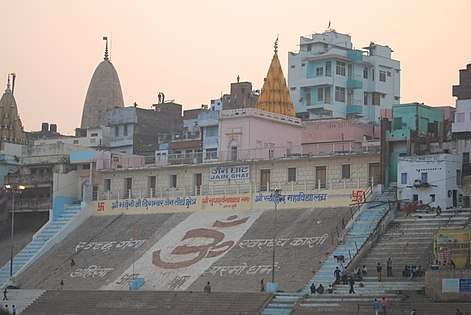 Jain Ghat, Varanasi, UP, India
Jain Ghat, Varanasi, UP, India
 Kailash Parvat Rachna
Kailash Parvat Rachna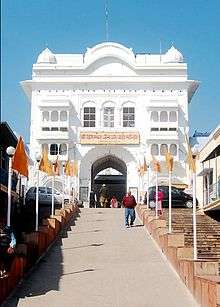
 Jambudweep Rachna
Jambudweep Rachna
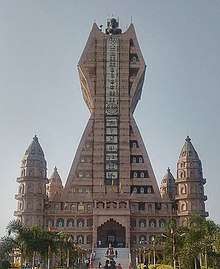
.jpg)
See also
Notes
- Office of registrar general and census commissioner (2011), C-1 Population By Religious Community, Ministry of Home Affairs, Government of India
- Zimmer 1953, p. 195.
- Zimmer 1953, p. 183.
- 4 Jain Tirthankaras born in Varanasi, The Times of India, 25 August 2015
- Birth of Adinath in Ayodhya
- Birth of Ajitnath in Ayodhya
- Birth of Abhinandanath in Ayodhya
- Birth of Sumatinath in Ayodhya
- Birth of Anantnath in Ayodhya
- Patrick Olivelle 2006, p. 399.
- John Cort 2010, pp. 32-37.
- Balcerowicz 2015, pp. 286-287.
- Titze p.103
- Jain Temple Complex, uptourism.gov.in, retrieved 22 September 2017
- "Deogarh". Retrieved 8 January 2010.
- Titze, Kurt; Bruhn, Klaus (1998). Jainism: a Pictorial guide to the religion of non-violence. Deogarh. Motilal Banarsidass Publ. p. 105. ISBN 81-208-1534-3.
- Alphabetical List of Monuments - Lucknow Circle, Uttar Pradesh, Archaeological Survey of India, retrieved 22 September 2017
- Universiteit van Amsterdam and Institute of South Asian Archaeology (1958). Studies in south Asian culture, Part 3. Deogarh. Brill Archive. p. 1–29.
- Smith 1901, p. Introduction.
- Das 1980, p. 171.
- Thomas 1877, p. 80.
References
- Balcerowicz, Piotr (2015), Early Asceticism in India: Ājīvikism and Jainism (1st ed.), Routledge, ISBN 9781317538530
- John Cort (2010). Framing the Jina: Narratives of Icons and Idols in Jain History. Oxford University Press. ISBN 978-0-19-973957-8.CS1 maint: ref=harv (link)
- Patrick Olivelle, ed. (2006), Between the Empires : Society in India 300 BCE to 400 CE, Oxford University Press, ISBN 978-0-19-530532-6
- Zimmer, Heinrich (1953) [April 1952], Campbell, Joseph (ed.), Philosophies Of India, London, E.C. 4: Routledge & Kegan Paul Ltd, ISBN 978-81-208-0739-6,
CS1 maint: location (link)
- Smith, Vincent Arthur (1901), The Jain stupa and other antiquities of Mathura
- Thomas, Edward (1877), "Jainism or The early faith of Asoka", Nature, London: London, Trübner & co., 16 (407): 329, Bibcode:1877Natur..16..329., doi:10.1038/016329a0
